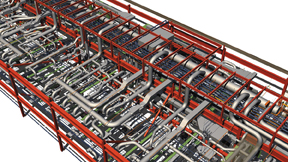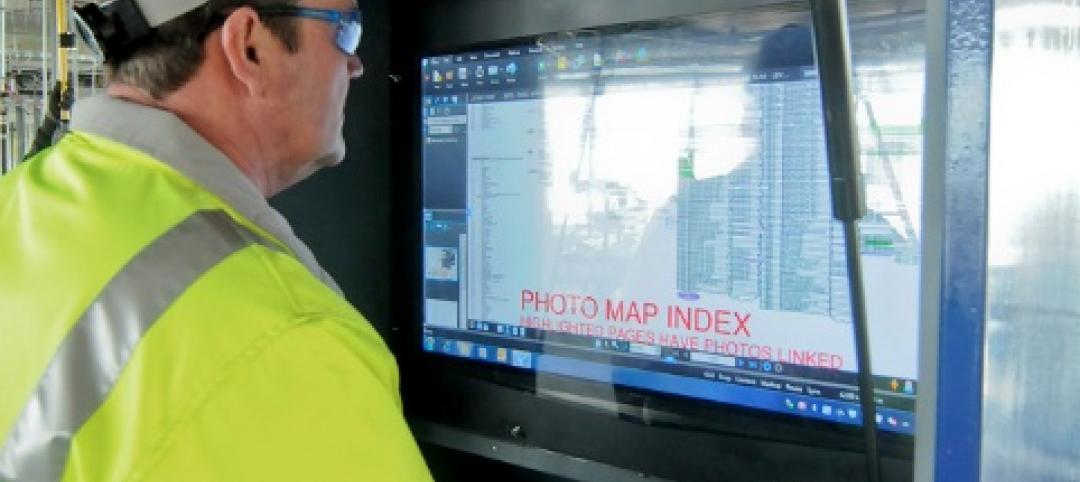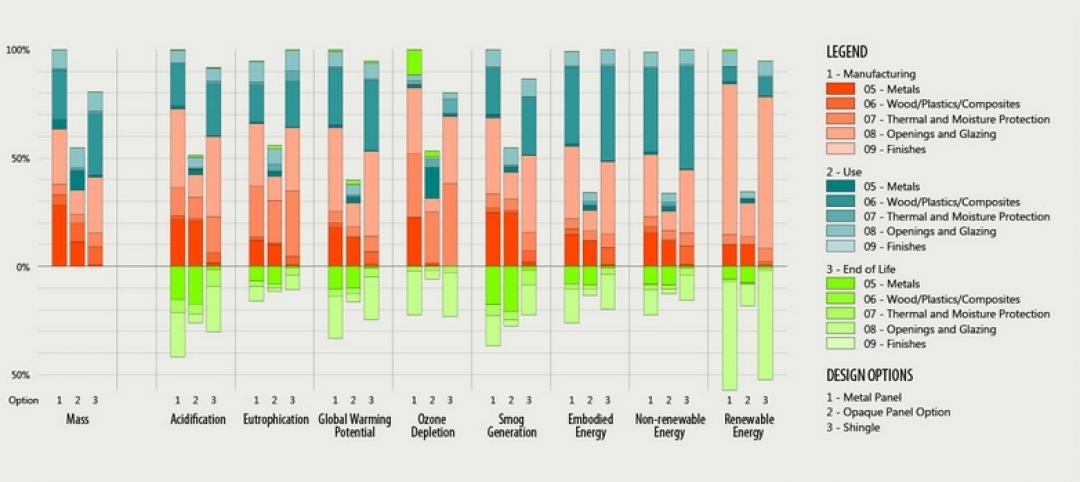For many of us who have participated in the rapid growth of BIM, It is tempting to see it as just one more technology development in the project delivery process, but its real impact is quickly accelerating beyond that. More accurately, the growth of BIM is heralding a true disruption in the construction industry. It is transforming markets, and revolutionizing expectations.
In fact, it is increasingly apparent that BIM fits a well-known pattern familiar to business scholars, a pattern known as disruptive innovation and made famous by Harvard Business School professor Clayton Christensen in his best-selling book The Innovator’s Dilemma.
In innovation theory, a disruptive technology is one that creates entirely new “value networks”––a combination of capabilities and expectations––for a given process or technology.
For example, 2D CAD simply computerized the production of drawings. Before CAD, designers produced drawings; after CAD, we still produced drawings, just differently and with more flexibility. CAD was a “sustaining technology”––something that simply improved an existing market proposition.
BIM also started out as a sustaining technology, as many disruptions do. The notion was that 3D models would be an efficient way to produce 2D documents, the next evolution of CAD enhancement. But it quickly morphed to a point where the model created brand new value networks: clash detection, quantity takeoffs, field BIM, direct fabrication, energy analysis––and, ultimately, BIM models as a store of myriad facility information.
Enter the Contractor: BIM becomes VDC
The disruptive growth of BIM has been largely due to the unanticipated interest contractors would take in the technology, and in this respect it is clearly a “new market disruption” in the terminology of disruption. By any measure, contractors have grasped the power of BIM with far more vigor than design professionals, who tend to see it as sustaining, and have failed to perceive its disruptive trajectory. Contractors looked at BIM models and immediately understood how they could be used for virtual design and construction (VDC) tasks.
Many leading design firms have come to realize that BIM’s disruption means developing new ways to work with savvy contractors and owners. At our firm, design teams now routinely exchange BIM files with contractors during and after design for purposes that are entirely unprecedented in our previous experience.
Further fueling the disruption, many savvy clients now contractually require that we work closely with the contractor and owner on BIM development and file exchange. Penn State University, for example, has some of the most detailed and well-developed processes for designers and contractors in BIM implementation.
The rumblings of disruption were becoming apparent to our firm almost as soon as contractors first learned we were creating BIM files. One of our first structural BIM projects was (somewhat hesitantly) transferred to the contractors so they could use it to quantify the lengths of steel members for a mill order. It proved useful, but it was unfamiliar to us, and a first brush with the emerging uses of BIM.
Since then we have become accustomed to our clients (both private and governmental) making BIM submission a requirement. Somewhere along the way, we began to realize that expectations were changing dramatically. It is now relatively routine for the BIM files to get substituted or supplemented with subcontractor 3D fabrication files for on-site, real-time coordination.
Enter the Owner: BIM in Real Time
More recently, another development has increased the pace of disruption-––the addition of the owner to the BIM design process. Smart owners quickly began to realize how these information-rich 3D models could be useful as an active decision-making tool during construction, and then used as stores of information for facility operations purposes. Many adopted detailed protocols for how BIM should be used on their projects.
In a subsequent development, our firm has begun to experience owners now sitting in on the fast-track design for a large high-tech facility and expecting to see 3D models they can query at any point. Our design team sits with the owner, contractor, and facility personnel to review BIM models in real time as they develop. This is a huge departure from our previous workflow, where owners received progress paper sets, carefully controlled for output. Now the process is open, active, and raw.
Embrace the Strange
For those of us using BIM, it’s important to fully understand BIM as a disruption and avoid getting caught up comparing CAD and BIM software as two different, but comparable, approaches. Such a perspective would focus on BIM’s sustaining effects and totally miss its disruptive potential.
BIM shows all the signs of a classic market disruption, and like other disruptions its ultimate destination is not yet clear, except that it will certainly change markets and expectations.
Our best strategy is to embrace the full power of BIM, to recognize its disruptive potential, and to explore its power to address many of the issues we currently face as we attempt to reImagine design and construction. +
--
John Tobin is Director of Architecture at EYP Architecture & Engineering, Albany, N.Y.
Related Stories
| Dec 10, 2013
16 great solutions for architects, engineers, and contractors
From a crowd-funded smart shovel to a why-didn’t-someone-do-this-sooner scheme for managing traffic in public restrooms, these ideas are noteworthy for creative problem-solving. Here are some of the most intriguing innovations the BD+C community has brought to our attention this year.
| Dec 9, 2013
Does technology help or hinder innovation?
Whether digital technology will help or hinder workplace insights remains a topic of ongoing debate. FastCo.Design features insights from business scholars on both sides of the issue.
| Dec 5, 2013
Translating design intent from across the globe
I recently attended the Bentley User Conference in Vejle, Denmark. I attended the event primarily to get a sense for the challenges our Danish counterparts are experiencing in project delivery and digital communication. One story I heard was from a BIM manager with Henning Larsen Architects in Denmark, who told me about a project she’d recently completed overseas in the Middle East. She outlined two distinct challenges and offered some interesting solutions to those challenges.
| Dec 3, 2013
‘BIM for all’ platform pays off for contractor
Construction giant JE Dunn is saving millions in cost avoidances by implementing a custom, cloud-based BIM/VDC collaboration platform.
| Nov 27, 2013
Exclusive survey: Revenues increased at nearly half of AEC firms in 2013
Forty-six percent of the respondents to an exclusive BD+C survey of AEC professionals reported that revenues had increased this year compared to 2012, with another 24.2% saying cash flow had stayed the same.
| Nov 25, 2013
Electronic plan review: Coming soon to a city near you?
With all the effort AEC professionals put into leveraging technology to communicate digitally on projects, it is a shame that there is often one major road block that becomes the paper in their otherwise “paperless” project: the local city planning and permitting department.
| Nov 22, 2013
Kieran Timberlake, PE International develop BIM tool for green building life cycle assessment
Kieran Timberlake and PE International have developed Tally, an analysis tool to help BIM users keep better score of their projects’ complete environmental footprints.
| Nov 8, 2013
Can Big Data help building owners slash op-ex budgets?
Real estate services giant Jones Lang LaSalle set out to answer these questions when it partnered with Pacific Controls to develop IntelliCommand, a 24/7 real-time remote monitoring and control service for its commercial real estate owner clients.
| Oct 30, 2013
Why are companies forcing people back to the office?
For a while now companies have been advised that flexibility is a key component to a successful workplace strategy, with remote working being a big consideration. But some argue that we’ve moved the needle too far toward a “work anywhere” culture.
| Oct 30, 2013
11 hot BIM/VDC topics for 2013
If you like to geek out on building information modeling and virtual design and construction, you should enjoy this overview of the top BIM/VDC topics.

















